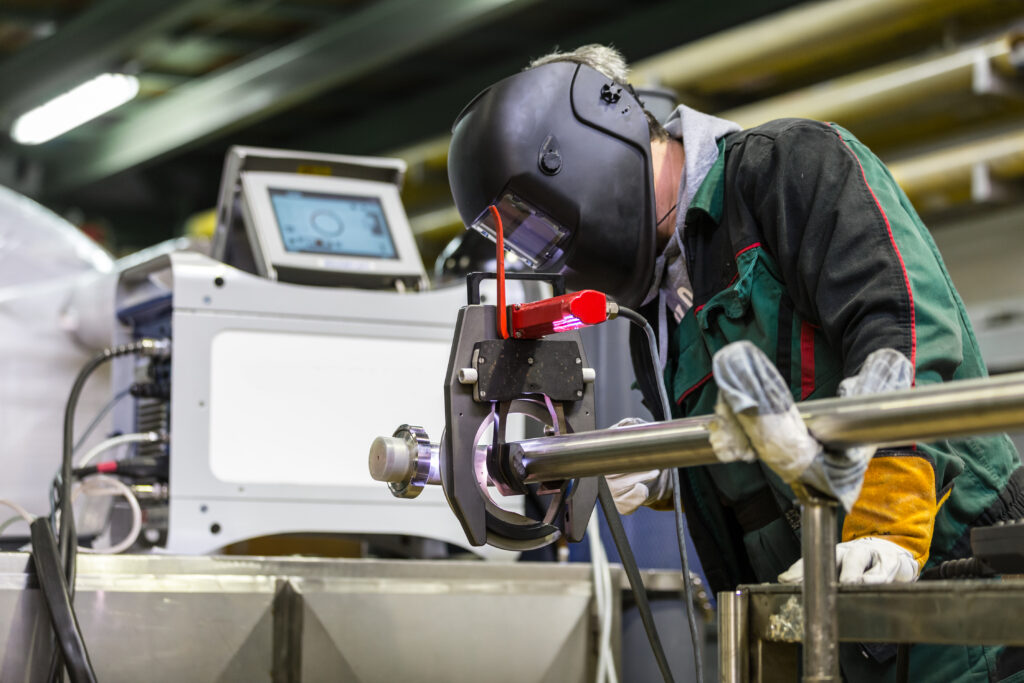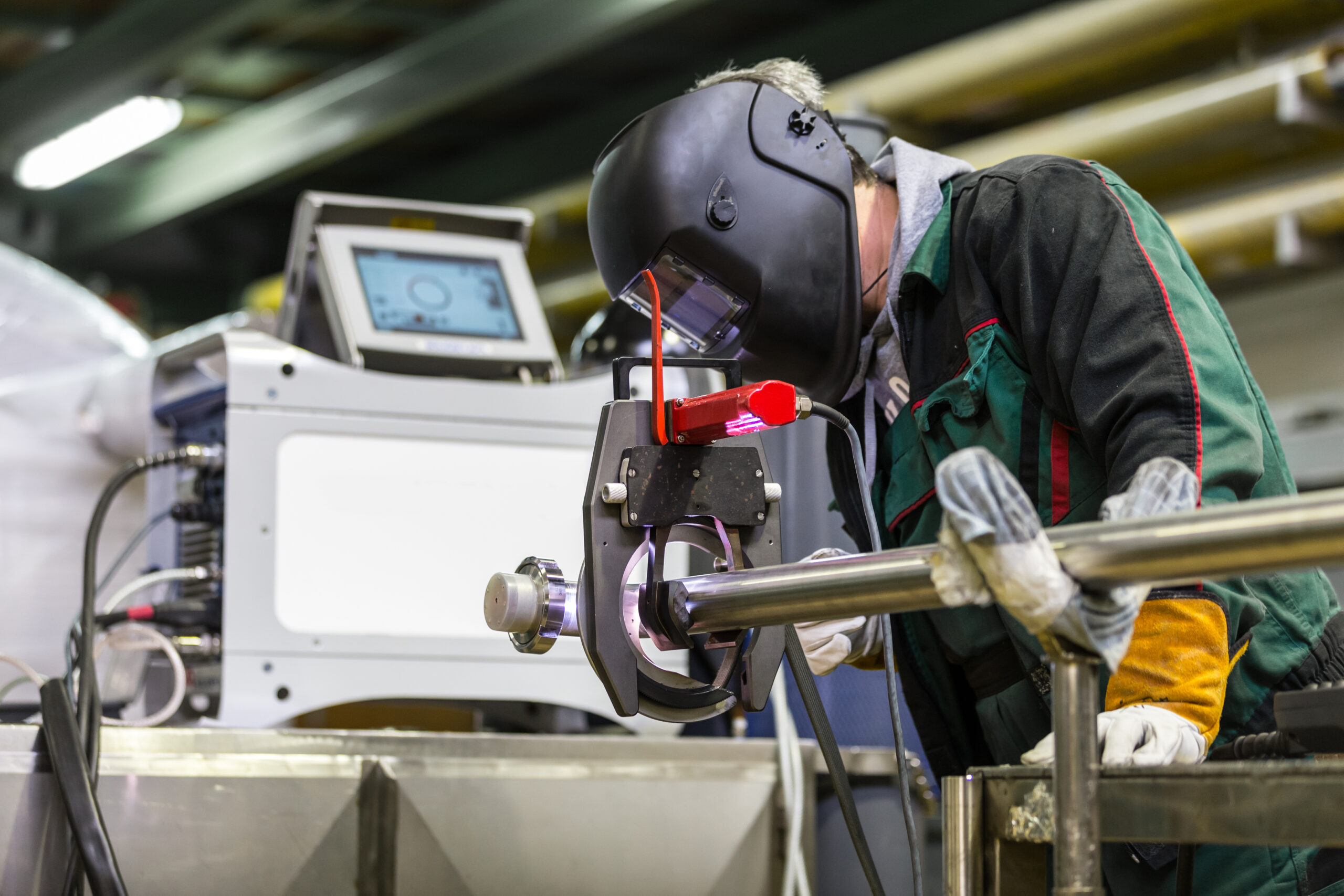
Autogenous orbital GTAW, or gas tungsten arc welding, is a highly specialized process that uses an automated welding system to join two pieces of metal without the need for filler metal. The process offers a high level of control and is popular in industries that need the highest quality and purity of welds, like semiconductor manufacturing, aerospace, and pharmaceuticals.
Today we will outline the basics of autogenous orbital GTAW, exploring the process and discussing the benefits and applications.
What Is Autogenous Orbital GTAW?
Autogenous welding is a process in which no filler material is needed to join two pieces of metal. Instead, the base metal on each side of the join is fused together to create the weld. Orbital welding uses an automatic weld head that articulates a tungsten electrode through a half (180-degree) or full (360-degree) rotation around the stationary welded material. Orbital welding was designed to reduce operator error in GTAW welding. Finally, GTAW, which is also known as tungsten inert gas (TIG) welding, is a process that produces a weld with a non-consumable tungsten electrode. GTAW forms an arc between a pointed tungsten electrode and the welded material using an inert gas shield (argon or helium) without melting the electrode.
| Process | Definition |
| Autogenous welding | Instead of using filler metal, the base metal is fused together to form the weld. |
| Orbital welding | An automatic weld head articulates a tungsten electrode around the stationary welded material. |
| GTAW welding | Gas tungsten arc welding (a.k.a. tungsten inert gas or TIG welding) uses non-consumable electrodes. |
Autogenous orbital GTAW produces strong, high-quality welds for piping units up to 6 inches (or 15.24 centimeters) in diameter and with a wall thickness of under 3 millimeters. The automatic weld head, and the elimination of filler material, simplifies the welding process while providing a high level of control and precision.
The Benefits of Autogenous Orbital GTAW
Some of the benefits of autogenous orbital GTAW include:
- Increased productivity – Since there’s no need for filler, and the tungsten electrode is non-consumable, many welds can be produced with fewer materials. Automatic orbital welding systems also make it possible to repeat welds with the same settings repeatedly, increasing speed without affecting accuracy or quality.
- Greater control – Orbital GTAW systems provide a high degree of control over every aspect of the weld, including parameters like arc length, arc voltage, electrode type, and geometry. In addition, these systems make it easier to save and reproduce inspection logs as required in regulated industries like pharma and defense.
- Reduced fabrication costs – Autogenous welding eliminates the need for filler, which can significantly reduce the cost of a project. In addition, orbital GTAW produces single-pass welds and reduces the need for joint preparation and post-grinding, helping to lower overall fabrication costs.
- Flattened learning curve – Unlike manual GTAW, autogenous orbital processes are easy to follow without specialized skills. Settings can be saved and recalled later, requiring operators to simply follow a series of instructions to complete the weld.
- Neater welds – Since filler material isn’t used, autogenous welding is less likely to create uneven, inconsistent bead patterns. The result is more visually appealing welds, even in the hands of an inexperienced operator.
- Less human intervention – Once the welding parameters are programmed, the weld is executed without human intervention. Not only does this save time and effort, but it makes it possible to complete welds in restricted and hard-to-reach locations.
Autogenous orbital GTAW is a cost-effective technique for welding small-diameter, thin-walled pipes or tubing because it requires fewer consumable materials and less manual effort to produce a large quantity of strong, accurate, high-quality welds.
Applications of Autogenous Orbital GTAW
Autogenous orbital GTAW is used for circular joins in pipes, tubes, and fittings, typically (but not always) composed of 316 SS (stainless steel). It’s primarily used in industries requiring high purity, such as semiconductor fabrication, pharmaceutical, and medical applications. The repeatability and control provided by autogenous orbital GTAW also make it useful in highly regulated industries that require robust recordkeeping. In addition, orbital GTAW can be used in spaces where it’s difficult or even impossible for human operators to complete a manual weld. Some examples of jobs that benefit from autogenous orbital GTAW include piping for fluid systems in wastewater treatment and semiconductor processing, as well as fuel, coolant, and hydraulic lines for aircraft, industrial equipment, and automobiles.
Arc Machines, Inchas been the leading provider of welding solutions for decades. Our wide range of welding solutions, including weld heads and power supplies for autogenous orbital GTAW, are ideal for increasing the quality and productivity of your pipe and tube welding results for a better ROI.has been a leading provider of orbital welding solutions for decades. Our unique welding solutions have allowed industries to achieve high-quality, productivity, and efficiency requirements. Contact us or more information on autogenous orbital GTAW. Arc Machines looks forward to providing the equipment and services your project needs.





